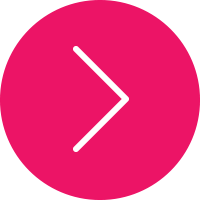A collaborative STEM informed resource for teachers of SBI3C
created by Jennifer Baluk, Cheryl Madliger, and Alex Procenko
MISCONCEPTIONS ABOUT ANATOMY OF MAMAMALS
Blood in your veins is blue.
The common question by children, youth and even adults is “if blood is red, then why do our veins look blue?” Children have this idea that because our veins appear blue, our blood must also be the colour blue. But, then how does this work? Does that mean we have both red and blue blood?
In the Introductory to the Circulatory System lesson, we examine components that make up blood and reasons counteracting this common misconception. Even when blood is deoxygenated, your blood is always red. In fact, deoxygenated blood produces a very dark red colour. Veins appear blue because skin absorbs blue light and different sizes of vessels appear different colours. For example, look closely at your veins along your wrist and compare this to the color of other veins. You will notice not all of your veins are the same colour and this is because of the difference in diameter and thickness of the walls in each vein absorbing light. It is important for students to understand that blood is always red as it consists of many red blood cells containing hemoglobin. “Oxygenated hemoglobin and blood are bright red. Deoxygenated hemoglobin and blood are dark red” (Helmenstine, 2016). Blood is always red.
Helmenstine, A. M. (2016). Is Deoxygenated Human Blood Blue? Retrieved from http://chemistry.about.com/od/biochemistry/a/Is-Deoxygenated-Human-Blood-Blue.htm
Blood on the left side of the heart goes to the left side of the body and blood on the right side of the heart goes to the right side of body.
The heart is a very important muscular organ responsible for pumping blood throughout our entire body. The heart has four chambers including: two atria (left and right) and two ventricles (left and right). Therefore, it is easy to get confused and think that because the heart is split by the septum into a left and right half, that blood on the left side of the heart goes to the left side of the body, vice versa.
In order to address this misconception, students must gain a better understanding of the function and anatomy of the heart including the four chambers, valves, and the purpose of arteries and veins, which is outlined in the Introduction to the Circulatory System lesson. It is important that students remember the right side of the heart pumps blood to our lungs to pick up oxygen, whereas the left side receives oxygenated blood from our lungs pumping it to the rest of the body.
A useful teaching strategy is labeling a diagram of the heart and drawing the path of blood flow using red and blue coloured pencils for oxygenated and deoxygenated blood. Students will grasp a better understanding after physically drawing the path of blood flow. In addition, to assess whether students understand how the heart works have them explain to their elbow partner the flow of blood throughout the circulatory system (worksheet activity students complete in the first lesson).
A great interactive cardiovascular resource displaying the anatomy of the heart and explaining blood flow can be found at: http://www.aboutkidshealth.ca/En/HowTheBodyWorks/IntroductiontotheHeart/TheHeartbeat/Pages/BloodFlowThroughtheHeart.aspx
High blood pressure cannot be prevented especially if it runs in my family.
High blood pressure, or hypertension, is a serious medical condition to be concerned about. Fortunately, it is easily detected and for the most part controllable with medication. You are more prone to developing high blood pressure if your blood relatives (parents) have the condition. However, certain lifestyle modifications have enabled people with a family history of hypertension to live free of it. For example: exercise, quitting smoking, eating a healthy diet (low-fat, low-sodium), keeping your weight at a healthy level, and maintaining your stress levels are all ways to help prevent high blood pressure.
In the Diseases, Treatment, and Career Exploration lesson, students will research a circulatory system disease/disorder in groups and present their findings to the class. Students will learn to identify early signs and symptoms of their disease/disorder, they will research the causes, diagnosis, treatment options, societal impact, prevention, and careers involved. Most importantly, students should analyze and focus on the impact of lifestyle choices on human health for more effective prevention strategies.


